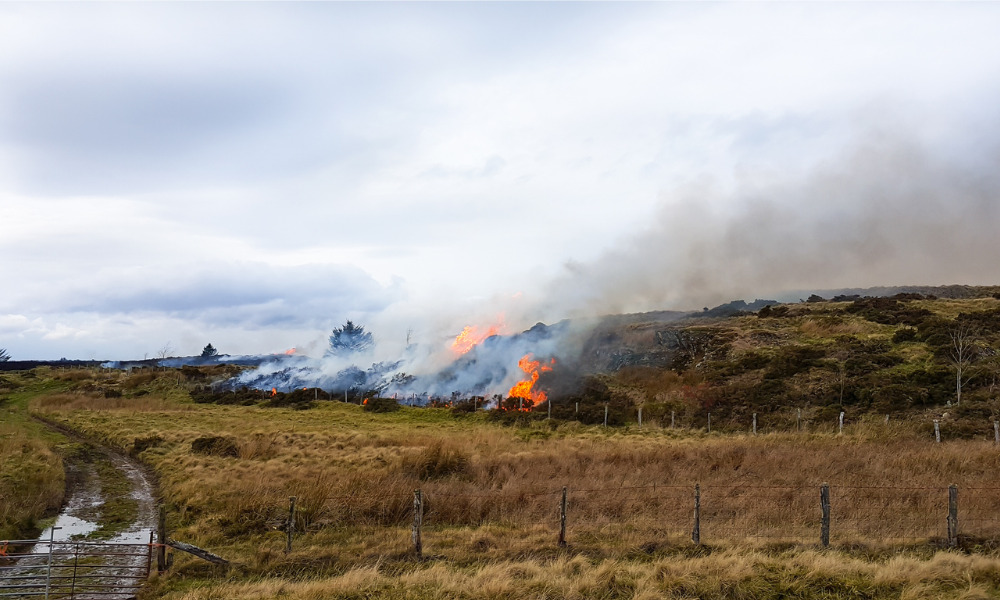A decade-long study reveals that racially and ethnically minoritized groups face higher dementia risks from wildfire smoke

A decade-long study involving over 1.2 million people in southern California found that exposure to wildfire smoke increases the risk of being diagnosed with dementia more than other types of air pollution.
The findings, presented today at the Alzheimer's Association International Conference® (AAIC®) 2024 in Philadelphia and online, indicate that wildfire smoke poses a higher brain health threat than other air pollution forms.
Wildfire smoke, motor vehicles, and factories emit fine particulate matter (PM2.5), a microscopic mixture of solid and liquid droplets 30 times smaller than an average human hair's width.
Researchers discovered that the risk of dementia diagnosis from wildfire smoke exposure was significantly higher, even with less exposure, compared to other PM2.5 sources. Although non-wildfire PM2.5 also raised dementia risk, it was not as pronounced.
High PM2.5 levels have also been linked to heart disease, asthma, and low birth weight.
“With the rising global incidence of wildfires, including in California andthe western US, exposure to this type of air pollution is an increasing threat to brain health,” said Claire Sexton, Alzheimer's Association senior director of scientific programs and outreach.
“These findings underscore the importance of enacting policies to prevent wildfires and investigating better methods to address them.”
The study analyzed health records of 1,227,241 socioeconomically diverse Kaiser Permanente southern California members aged 60 or older from 2009 to 2019, none of whom had dementia at the study's start.
Total PM2.5 was estimated from various sources, including satellite-derived aerosol properties and Environmental Protection Agency monitoring. Researchers used air quality monitoring data, satellite imagery, and machine learning to differentiate between wildfire and non-wildfire PM2.5.
They assessed each participant's exposure based on their residence and compared this data to subsequent dementia diagnoses.
Reported for the first time at AAIC 2024, the study found a 21 percent increase in the odds of dementia diagnosis for every 1 microgram per meter increase in the three-year average wildfire PM2.5 exposure.
In contrast, there was a 3 percent increased risk for every 3 µg/m3 increase in non-wildfire PM2.5 exposure over three years.
“Previous research has found that exposure to PM2.5 is associated with dementia, but our large, long-term study shows the risk from wildfire smoke exposure is an even bigger concern,” said Holly Elser, the study's first author and a neurology resident at the Hospital of the University of Pennsylvania, Philadelphia.
“Air pollution from wildfires now accounts for over 70 percent of total PM2.5 exposure on poor air quality days in California. This is a real problem.”
Elser noted that wildfire PM2.5 might be more hazardous due to higher production temperatures, greater toxic chemical concentrations, and smaller average diameters compared to other sources. More research is needed to determine the exact mechanisms.
“The findings appeared most pronounced among individuals from racially and ethnically minoritized groups and in high poverty areas,” said Joan A. Casey, senior author of the study and assistant professor in the Department of Environmental and Occupational Health Sciences at the University of Washington, Seattle.
“These findings underscore that clinical and health policies seeking to prevent dementia-associated disparities should include efforts to reduce exposure to long-term wildfire and non-wildfire PM2.5.”
Elser and Casey recommend updating air filtration systems and checking air quality on weather apps. An Air Quality Index (AQI) of 100 or higher indicates unhealthy air. To reduce risk, people should stay inside with windows closed and wear an N95 mask outdoors.



